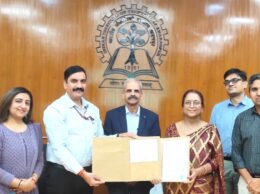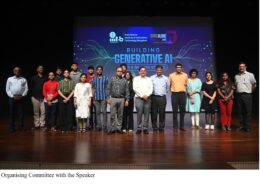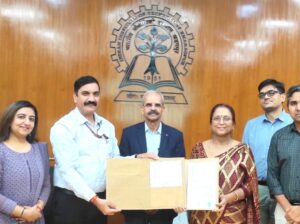Noida, By Gaurav Shah: A lot of recent development sector conferences have focused on Collaboration as an important theme and sometimes the central pivot around which the conference has been designed – Collaboration for Sustainable Impact, Collaboration for Big Bets, and Collaboration for Scale etc. There is almost no one I have met or heard who doesn’t believe in the potentially large-scale impact of partnerships and alliances but they also believe that more often than not it seems like mirage, an unfulfilled promise or unleveraged potential. What kind of collaborations will help take the sector to the next level in terms of bringing about sustainable, scalable social change and what’s needed from a process perspective to make this happen? While there are no clear answers to this question, there are many different models for collaboration doing the rounds.
- Technical Collaborations: Based on a specific technical shortcoming faced by an organisation which it is looking to fulfil through a partnership or alliance. Ex: Organisation A is not good at fund raising and ties up with Organisation B which specialises in that. There is a very clear quid pro-quo involved here and as long as there is a mutual need such partnerships survive on a strong footing.
- Relationship Based Collaborations: Based on the need to understand and connect with specific stakeholder segments. Ex: Organisation A has the funding and desire to work on improving education in a district and teams up with Organisation B who has the expertise of working with the government along with the relevant relationships. Alternatively, this expertise could be with regards to working with the community, with high net worth individuals, or with corporates etc. With relationship building being more of a softer skill (versus say fund raising or story telling), these partnerships take a longer time to come about and are driven a lot by the equation between the respective leaders of these organisations.
- Sector Specific Collaborations: Based on the need to bring organisations working in a particular sub sector (Ex: primary education, primary health, livelihoods, environment, trafficking etc.) together to articulate the actual problems facing the sector, ideate on a basket of solutions (with or without consensus around them) and then work together to implement solutions and advocate with the government. This helps bring together much needed expertise onto a common platform and provides the opportunity to look at issues from a variety of different perspectives, learn from each other’s experiences and make an effort to influence the external ecosystem through a united voice.
- Geographic Collaborations: Based on the need to bring organisations working in a specific geographical area (Ex: District, State, Region etc.) together to develop a more holistic, systems thinking driven, cross sectoral view of development for that geography and evolve silo-less solutions to the issues being faced there. This idea is supported by the belief that understanding local context and issues is most important in the development space where standardised, cookie cutter kind of approaches to developmental problems don’t really work.
- Ecosystem Collaborations: Based on the need to bring organisations across the ecosystem (Ex: Funders, Government, Implementation NGOs, Social Consulting organisations / Programme Managers, Community Representatives etc.) together to make sure that discussions cover all viewpoints and a lotof decisions regarding the idea of development leadership and how to go about it can at least be touched upon in the room. Imagine the power of an intervention which has political buy-in, is supported by the government machinery, has a funder backing it (at least initially, till the government takes over), has been evolved ground up using participatory approaches and has really good professional talent programme managing and implementing it.
Moving from 1 to 5 clearly increases the complexity of bringing together stakeholders and managing collaboration in terms of multiple parameters – No. of stakeholders, Multiple viewpoints, multiple agendas and egos, moving from a transactional relationship which is largely bilateral to a strategic relationship where the focus is more on the final beneficiary / participant pool, challenges in decision making, keeping everyone interested and motivated over time etc. However, the benefits and possibility of actually bringing about sustainable social change at scale also increases with this move. Sector specific, geographic and ecosystem level collaborations have the power to break down silos within the sector and actually make it a more serious contributor in transforming and improving lives.
Making a move towards institutionalising collaborations of this nature and scale would require individuals/teams/organisations with the skills and perseverance to influence and incentivise sector leaders to come to the table, the ability to facilitate discussions through a system thinking view of social issues and to make meaning in a collaborative fashion designing sustainable solutions for scale (rather than at scale). It would need a breakdown of hierarchies, egos and specially organisational boundaries so that people are able to unite towards a common goal and purpose that goes beyond just their organisations.
Author Bio : Gaurav Shah, an MBA from IIM Calcutta and an Engineer from BITS, Pilani. With over 14 years of experience he now works as Director and Co-Founder of the Indian School of Development Management (ISDM). His areas of experience include program management and implementation, strategic planning, organization restructuring and design, networks and partnerships, etc. He is passionate about making a high impact by working in the livelihoods, skill building, education through initiatives in institutional set-up and strengthening, capacity building, social inclusion based on the universal values on equity and fairness.









